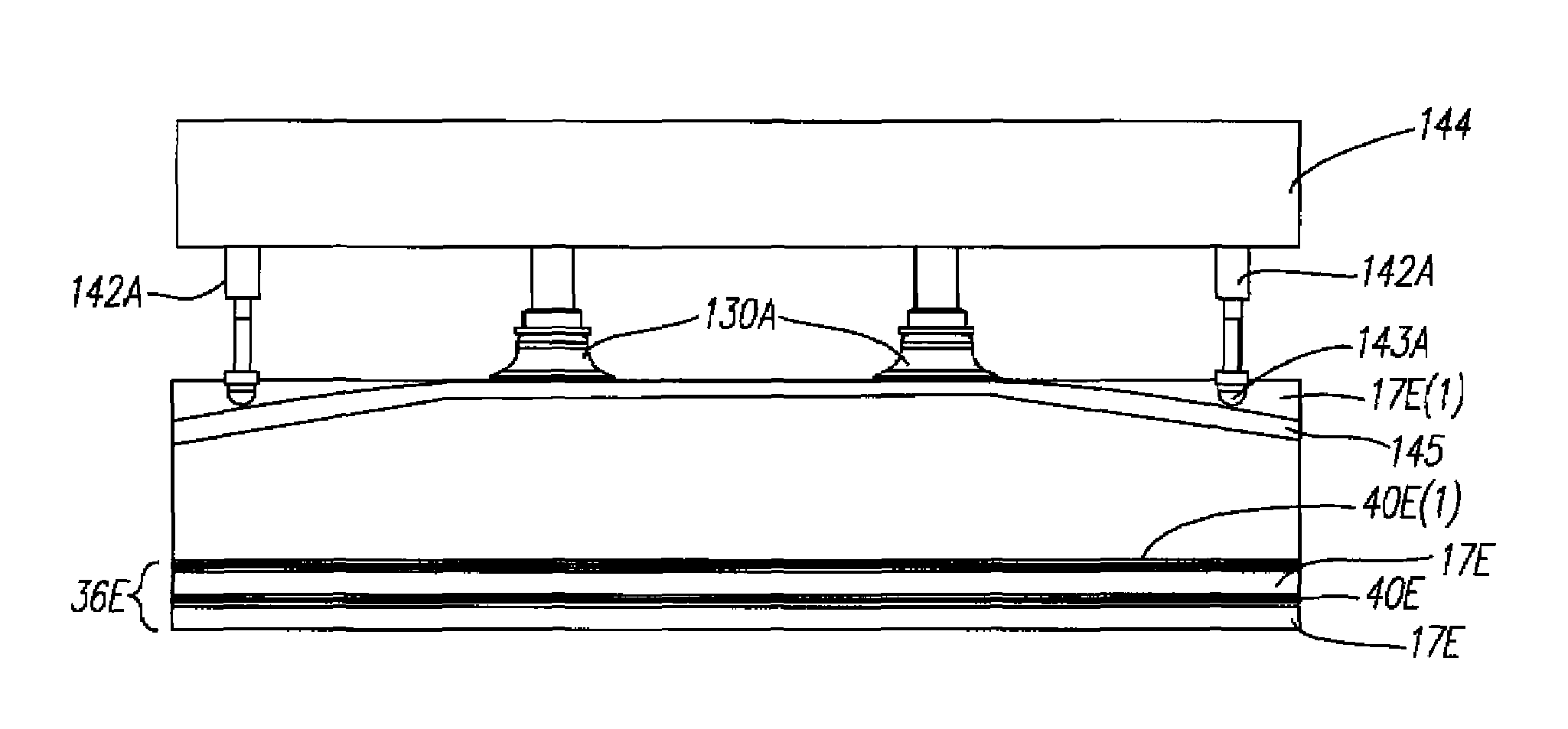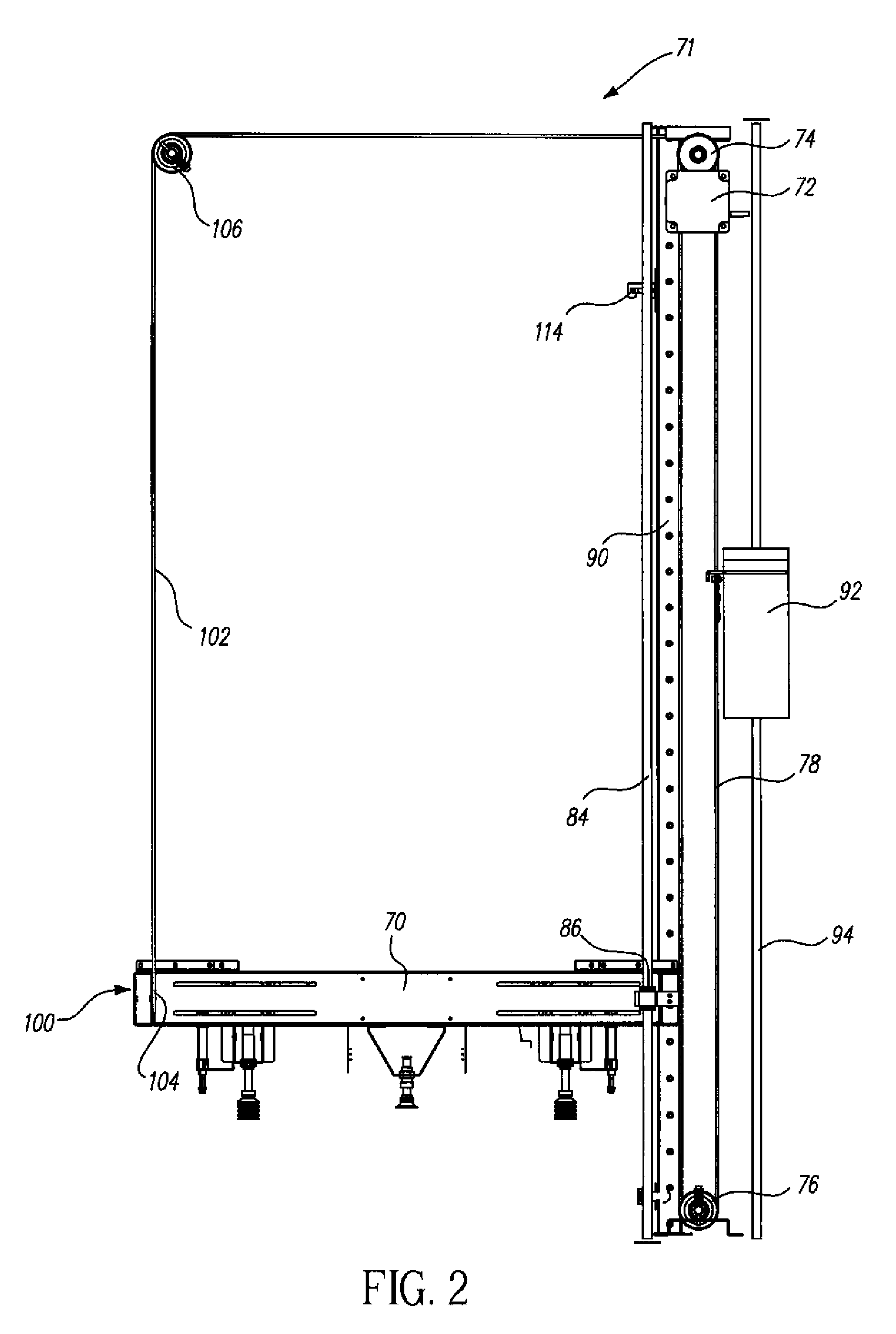Method and apparatus for separating media combinations from a media stack
a technology of media stack and media combination, applied in the field of imaging systems, can solve the problems of additional automation problems, special technological hurdles in the printing industry, undesirable defects in the final printed product,
- Summary
- Abstract
- Description
- Claims
- Application Information
AI Technical Summary
Benefits of technology
Problems solved by technology
Method used
Image
Examples
Embodiment Construction
[0035]FIG. 1 schematically shows an image recording system 10. The image recording system 10 includes an exposure system 15 and a materials handling system 30. In this embodiment, exposure system 15 and materials handling system 30 form an integrated system enclosed by housing 12.
[0036]Exposure system 15 includes an exposure support 16 to mount an image recordable material 17 thereupon and an imaging head 18 disposed to emit radiation beams 19 to form an image on the image recordable material 17. Materials handling system 30 includes, among other things, a picking assembly 70. Picking assembly 70 and image recordable materials picker 50 (herein referred to as “materials picker 50”) secure and transport image recordable materials 17A, 17B, and 17C, respectively from one or more media stacks 36A, 36B, and 36C of image forming materials 17A, 17B, and 17C and transport the secured image recordable materials 17A, 17B, and 17C to exposure system 15. Picking assembly 70 includes slip-sheet...
PUM
 Login to View More
Login to View More Abstract
Description
Claims
Application Information
 Login to View More
Login to View More - R&D
- Intellectual Property
- Life Sciences
- Materials
- Tech Scout
- Unparalleled Data Quality
- Higher Quality Content
- 60% Fewer Hallucinations
Browse by: Latest US Patents, China's latest patents, Technical Efficacy Thesaurus, Application Domain, Technology Topic, Popular Technical Reports.
© 2025 PatSnap. All rights reserved.Legal|Privacy policy|Modern Slavery Act Transparency Statement|Sitemap|About US| Contact US: help@patsnap.com



